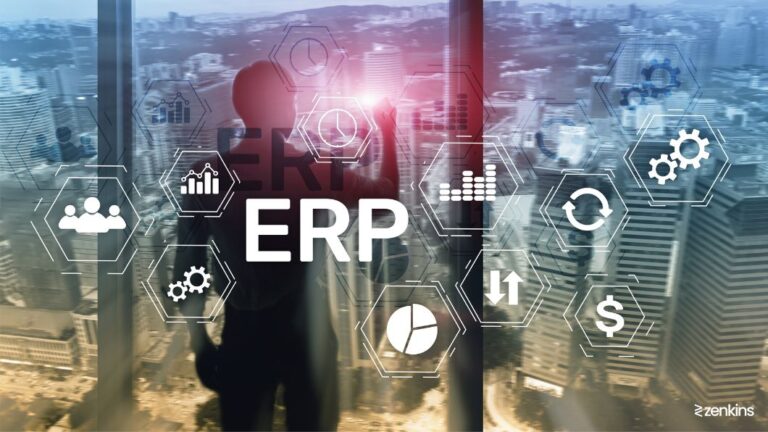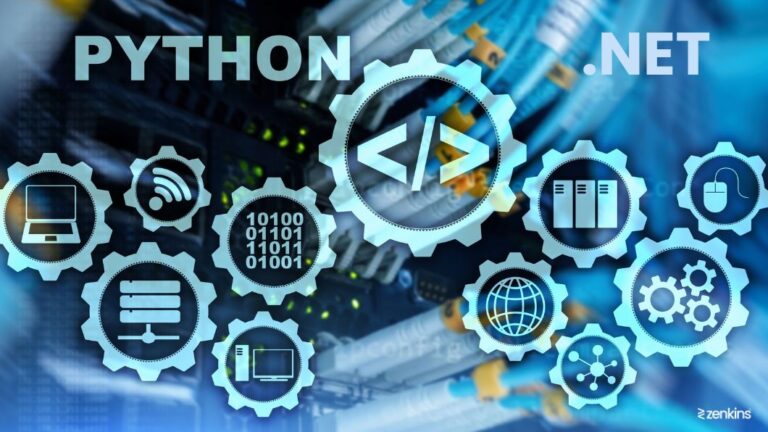Optimizing Performance: Techniques for High-Performing Software Applications
Table of Contents
In today’s fast-paced digital landscape, software applications are expected to deliver high performance and responsiveness to meet user demands. Whether it’s an application running on a desktop, a mobile device, or in the cloud, optimizing its performance is crucial for providing a seamless user experience, minimizing resource usage, and maximizing business success. This article explores various techniques and strategies for optimizing the performance of software applications. It delves into key factors that affect performance, such as hardware limitations and software design choices.
Additionally, it covers topics like profiling and performance analysis, efficient algorithms and data structures, resource consumption optimization, improving I/O operations, parallelization and concurrency, and the importance of testing and continuous performance monitoring. By implementing these techniques, developers can enhance the speed, efficiency, and overall performance of their software applications.
Introduction: Understanding the Importance of Software Performance Optimization
The Role of Software Performance Optimization in Software Development
When it comes to developing software applications, performance optimization plays a crucial role in ensuring that our creations run smoothly and efficiently. Performance optimization involves various techniques and strategies aimed at enhancing the speed, responsiveness, and overall efficiency of the software. By fine-tuning our applications, we can deliver a better user experience and improve the overall quality of our software.
The Impact of Poor Performance on User Experience and Business Success
We’ve all experienced the frustration of using a slow and unresponsive software application. Whether it’s a mobile app that takes forever to load or a website that crashes repeatedly, poor performance can ruin the user experience and push users away. In today’s competitive digital landscape, user satisfaction is paramount to the success of our software and, consequently, our business. Slow performance can lead to negative reviews, decreased user engagement, and a loss of customers. Therefore, investing time and effort into performance optimization is not just a technical consideration, but a critical business decision.
Key Factors Affecting Software Performance
Hardware Considerations and Limitations
While we may like to think that our code is the only factor affecting performance, hardware limitations also play a significant role. The processing power, memory, and storage capacity of the devices running our software can impact its performance. Understanding the hardware constraints and optimizing our software accordingly can help us make the most of the available resources and deliver better performance.
Software Design and Architecture
The design and architecture of our software can significantly impact its performance. Well-designed software follows principles such as modularity, scalability, and reusability, which contribute to better performance. On the other hand, a poorly designed software architecture can introduce bottlenecks and inefficiencies that hinder performance. By carefully considering the design and architecture of our software, we can avoid potential performance pitfalls and build high-performing applications.
Code Efficiency and Execution
At the heart of performance optimization lies the efficiency of our code and its execution. Writing clean, concise, and optimized code can make a noticeable difference in the performance of our applications. Techniques such as minimizing redundant calculations, reducing memory usage, and optimizing loops and data access can significantly enhance the speed and responsiveness of our software.
Profiling and Performance Analysis: Identifying Bottlenecks for High-Performing Software Applications
Introduction to Profiling Tools and Techniques
Profiling tools and techniques allow us to analyze the performance of our software and identify bottlenecks. By using profiling tools, we can measure the execution time, memory usage, and resource utilization of different parts of our application. This information helps us pinpoint specific areas that require optimization, allowing us to focus on the most critical performance bottlenecks.
Analyzing Performance Metrics and Identifying Bottlenecks
Once we have collected performance metrics using profiling tools, the next step is to analyze the data and identify bottlenecks. By examining the metrics, we can detect areas of our code that consume excessive resources or suffer from slow execution. This analysis guides us in prioritizing our optimization efforts, enabling us to tackle the most problematic areas first and achieve the greatest performance gains.
Efficient Algorithms and Data Structures: Enhancing Performance from the Core
Choosing the Right Algorithms for Optimal Performance
Algorithms are the heart and soul of our software applications, and choosing the right ones can have a significant impact on performance. By selecting algorithms optimized for specific tasks, we can minimize computational complexity and reduce the time and resources required to perform critical operations. Investing time in understanding and implementing efficient algorithms pays off in the long run, as it lays a solid foundation for high-performing software.
Optimizing Data Structures for Memory and Execution Efficiency
In addition to algorithms, the choice of data structures can greatly influence performance. Properly selecting and organizing data structures can improve memory usage, reduce redundant operations, and optimize access patterns. By considering the characteristics of our data and the operations performed on it, we can choose data structures that maximize memory and execution efficiency, ultimately leading to faster and more efficient software.
Optimizing Resource Consumption: Memory and CPU Usage
Techniques for Reducing Memory Footprint
Does your software application feel a little too memory-hungry? Don’t worry, we’ve got you covered! Here are some nifty techniques to help reduce that memory footprint and make your app lean and mean.
First off, take a good look at your data structures. Are they as efficient as they can be? Consider using smaller data types or even custom data structures tailored to your application’s specific needs. And don’t forget to free up memory when you no longer need it – it’s like tidying up after a party!
Another great way to cut down on memory usage is to optimize your algorithms. Look for opportunities to minimize unnecessary data duplication or reduce the number of objects being created. It’s all about doing more with less!
Strategies for Optimizing CPU Usage and Processing Time
Is your software feeling a bit sluggish? Time to give it a shot of espresso and optimize that CPU usage! Here are some strategies to help you speed things up and get your app performing like a champion.
First things first, analyze your code for any unnecessary computations or redundant operations. Remember, less is more! Simplify and streamline your algorithms to avoid wasting precious processing power.
Parallelize, parallelize, parallelize! Take advantage of multithreading and parallel processing to divide and conquer. By splitting tasks across multiple threads or cores, you can make the most of your hardware’s capabilities and get things done in record time.
And hey, don’t forget about caching! Storing frequently accessed data in memory can significantly reduce CPU usage by minimizing time-consuming disk operations. It’s like having a secret stash of information right at your fingertips!
Improving I/O Operations for High-Performing Software Applications
Techniques for Efficient File Handling and Data Persistence
Tired of waiting for files to load or saving data at a snail’s pace? Fear not, we’ve got some tricks up our sleeve to supercharge your file handling and data persistence.
One simple yet effective technique is to batch your I/O operations. Instead of reading or writing data one byte at a time, group them together and perform larger, more efficient transfers. It’s like moving a stack of papers instead of individual sheets!
Consider using compression techniques to reduce the size of your files. Smaller file sizes mean faster I/O operations, plus a bonus in reduced storage requirements. It’s like squeezing all your clothes into a tiny suitcase – more space, less hassle!
Enhancing Network Communication Performance and Throughput
Is your app feeling sluggish when it comes to network communication? Time to amp up that performance and get your app flying across the internet like a superhero!
One handy technique is to minimize the number of round trips between your app and the server. Look for ways to batch your requests or utilize protocols that allow multiple operations in a single connection. It’s like carpooling your data – more efficiency, less traffic!
Consider using asynchronous communication to keep things flowing smoothly. By allowing your app to continue doing other tasks while waiting for network responses, you can make the most of your precious time. It’s like juggling multiple tasks without dropping any balls!
Parallelization and Concurrency for High-Performing Software Applications
Introduction to Multithreading and Parallel Processing
Ready to take your app to the next level? Let’s dive into the wonderful world of multithreading and parallel processing – the secret sauce to unlocking maximum performance!
Multithreading allows your app to perform multiple tasks simultaneously, like a multitasking wizard. By dividing your workload across different threads, you can make the most of your CPU cores and get things done faster than a speeding bullet!
Parallel processing takes things even further by splitting computations into smaller, independent tasks that can be executed simultaneously. It’s like having a team of superheroes working together to save the day!
Implementing Parallelization Techniques for Improved Performance
Ready to put your CPU to work? Here are some techniques to help you harness the power of parallelization and supercharge your app’s performance.
Identify tasks that can be executed independently and break them down into smaller subtasks. Then, assign these subtasks to different threads or processes. It’s like running a relay race where each runner contributes to the overall victory!
But remember, with great power comes great responsibility. Make sure to handle shared resources carefully to avoid conflicts and race conditions. Think of it as coordinating a team project – everyone needs to communicate and collaborate effectively!
Testing and Continuous Performance Monitoring: Ensuring Long-term Optimization
Performance Testing Strategies and Tools
Congratulations, your app is now a high-performance superstar! But the quest for optimization doesn’t stop here. Let’s talk about testing and monitoring to ensure your app stays in top shape.
Performance testing is like taking your app to the gym – it helps you identify bottlenecks and areas for improvement. Use tools like load testing to simulate real-world usage scenarios and measure your app’s response time, scalability, and resource usage. It’s like giving your app a stress test to see how it holds up!
Establishing Continuous Performance Monitoring and Optimization Processes
Software performance optimization is not a one-time event; it’s an ongoing process. To keep your app performing at its best, establish a culture of continuous performance monitoring and optimization.
Implement monitoring tools that can provide insights into your app’s performance metrics in real-time. This way, you can detect and address any performance issues promptly. It’s like having a personal trainer for your app, always pushing it to be better!
Regularly analyze performance data and identify areas for improvement. Set up automated alerts to notify you of any deviations from expected performance levels. It’s like having an app babysitter, always keeping an eye on things!
Remember, optimization is a journey, not a destination. Keep experimenting, keep refining, and your app will continue to shine like a true performer!
Software performance is an ongoing process that requires attention to detail, continuous monitoring, and adaptation to evolving technologies. By implementing the techniques and strategies discussed in this article, developers can ensure their applications deliver high performance, responsiveness, and efficiency. From identifying bottlenecks and optimizing algorithms to reducing resource consumption and harnessing parallel processing, every aspect plays a crucial role in achieving optimal performance. By prioritizing performance optimization, developers can enhance the user experience, increase customer satisfaction, and gain a competitive edge in the ever-advancing world of software development.
FAQ
Why is performance optimization important for software applications?
Performance optimization is essential for software applications because it ensures they run efficiently, respond quickly, and provide a seamless user experience. Optimized applications not only enhance customer satisfaction but also contribute to improved business success by attracting and retaining users.
How can profiling and performance analysis help in optimizing software performance?
Profiling tools and performance analysis techniques assist in identifying bottlenecks and areas of improvement within an application. By analyzing performance metrics, developers can pinpoint areas causing slowdowns and make informed decisions on how to optimize the code, algorithms, or resource consumption to enhance overall performance.
What are the benefits of parallelization and concurrency in software performance optimization?
Parallelization and concurrency techniques enable software applications to leverage the power of multiple threads or parallel processing, resulting in improved performance. By dividing tasks into smaller units that can be executed simultaneously, applications can make more efficient use of CPU resources and reduce execution time, leading to enhanced overall performance.
How important is continuous performance monitoring for software applications?
Continuous performance monitoring is crucial for long-term software performance optimization. It allows developers to track performance metrics, identify any performance regressions, and make timely adjustments to maintain optimal performance. By monitoring performance regularly, developers can ensure that the application remains efficient even as usage patterns and system conditions change.




